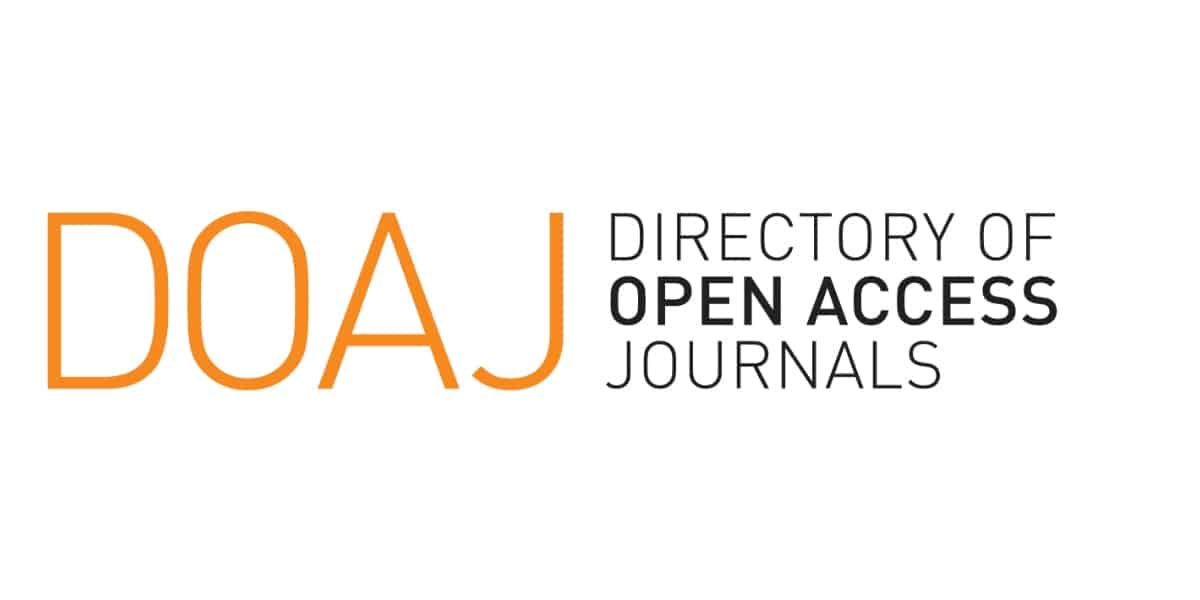Analisis Tahan Luntur dan Ketuaan Warna pada Kain Ecoprint Hasil Teknik Pounding dengan Fiksasi Tawas
Keywords:
ecoprint, teknik pounding, tahan luntur warna, ketuaan warna, fiksasi tawasAbstract
Ecoprint is a dyeing technique using natural materials such as leaves, which is increasingly demanded by the textile industry due to its environmental friendliness compared to synthetic dyes. Studies on ecoprinting have mainly focused on leaf patterns and colour directions, with limited research on the colour fastness and strength of leaf parts used on fabrics. The aim of this study is to analyse the colour fastness and strength, specifically on ecoprint fabrics produced by the alum fixation pounding technique, using different types of leaves including teak, lanang, cassava, Japanese papaya and aubergine leaves. The tests include colour fastness to soap wash, ironing heat, sunlight and colour strength value (K/S). The results show that teak leaves have the highest fastness to sunlight with a value of 5 (very good), although they have the lowest resistance to soap washing with a value of 3-4 (fair), while other leaves vary between 3 (fair) and 2 (poor) to sunlight. This reinforces the recommendation to avoid drying ecoprint fabrics in direct sunlight. Fastness to soap wash and ironing heat is considered good. Furthermore, the K/S value analysis shows that the upper side of the leaves generally contributes more to colour absorption than the lower side, depending on the method used, with the exception of manioc leaves.
References
[1] D. A. Asmara and S. Meilani, “Penerapan Teknik Ecoprint pada Dedaunan Menjadi Produk Bernilai Jual,” J. Pengabdi. Seni, vol. 1, no. 2, pp. 16–26, 2020, doi: https://doi.org/10.24821/jas.v1i2.4706.
[2] Enrico, “Dampak Limbah Cair Industri Tekstil Terhadap Lingkungan dan Aplikasi Tehnik Eco Printing sebagai Usaha Mengurangi Limbah,” Moda Fash. J., vol. 1, no. 1, pp. 5–13, 2019, doi: https://doi.org/10.37715/moda.v1i1.706.
[3] Faridatun, “Ecoprint ; Cetak Motif Alam Ramah Lingkungan,” J. Prakarsa Paedagog., vol. 5, no. 1, pp. 230–234, 2022, doi: https://doi.org/10.24176/jpp.v5i1.9002.
[4] D. Wahyulina and F. Chrisdanty, “Kain Batik Ciprat Kreasi Wisnuwardhana (Teknik Ciprat dan Oles),” J. ABM Mengabdi, vol. 11, no. 1, pp. 55–66, 2024, doi: https://doi.org/10.31966/jam.v11i1.1408.
[5] A. S. Budiman et al., “Pengembangan Keahlian Ecoprint Menjadi Produk Kreatif Kewirausahaan di SMK Muhammadiyah Gamping Sleman,” Din. J. Pengabdi. Kpd. Masy., vol. 7, no. 6, pp. 1570–1577, 2023, doi: https://doi.org/10.31849/dinamisia.v7i6.16022.
[6] I. A. Kusumaningtyas and U. Wahyuningsih, “Analisa Hasil Penelitian tentang Teknik Ecoprint Menggunakan Mordan Tawas, Kapur, dan Tunjung pada Serat Alam,” J. Online Tata Busana, vol. 10, no. 3, pp. 9–12, 2021, doi: https://doi.org/10.26740/jurnal-online-tata-busana.v10i3.42976.
[7] Y. S. Simanungkalit and R. Syamwil, “Teknik Ecoprint dengan Memanfaatkan Limbah Mawar (Rosa Sp.) pada Kain Katun,” Fash. Fash. Educ. J., vol. 9, no. 1, pp. 90–98, 2020, doi: https://journal.unnes.ac.id/sju/ffe/article/view/40430.
[8] A. Asnani, H. Diastuti, E. V. Y. Delsy, and W. Handoko, “Pelatihan Pembuatan Tas Ecoprint Sebagai Produk Ecoprint Siap Pakai,” J. Serambi Abdimas, vol. 3, no. 2, pp. 155–158, 2022, doi: https://doi.org/10.20884/1.sa.2022.3.2.7338.
[9] S. E. Wahyuningsih et al., “Pemberdayaan Ekonomi Masyarakat Sekaran melalui Produk Ecoprint Berbasis Tumbuhan Lokal,” J. Abdi Masy. Indones., vol. 4, no. 5, pp. 1365–1374, 2024, doi: https://doi.org/10.54082/jamsi.1376.
[10] E. Saptutyningsih and B. P. Kamiel, “Mendorong Ekonomi Kreatif Melalui Produk Ecoprint Melalui Pemanfaatan Potensi Alam di Dukuh Glugo Bantul,” War. LPM, vol. 24, no. 1, pp. 145–158, 2020, doi: https://doi.org/10.23917/warta.v24i1.11081.
[11] R. Lubis, A. Prayudi, and E. J. Hasibuan, “Pembuatan Eco-print Pada Totebag Menggunakan Tanaman Sekitar Lingkungan Sebagai Zat Warna Alami,” I-Com Indones. Community J., vol. 3, no. 4, pp. 2058–2069, 2023, doi: https://doi.org/10.33379/icom.v3i4.3493.
[12] S. Nurmasitah, S. F. Sangadah, and Musdalifah, “The quality of Jatropha leaf ecoprint products using steaming and pounding techniques,” IOP Conf. Ser. Earth Environ. Sci., vol. 1203, no. 1, pp. 1–7, 2023, doi: https://doi.org/10.1088/1755-1315/1203/1/012020.
[13] A. P. M. Sholikhah and Widowati, “Kualitas Hasil Ecoprint Motif Daun Jenitri dengan ZWA Daun Ketapang menggunakan Mordan Tawas, Tunjung dan Kapur Tohor,” Fash. Fash. Educ. J., vol. 13, no. 1, pp. 44–51, 2024, doi: https://doi.org/10.15294/ffej.v13i1.76046.
[14] B. W. D. S. and M. Alvin, “Teknik Pewarnaan Alam Eco Print Daun Ubi dengan Penggunaan Fiksator Kapur, Tawas dan Tunjung,” J. Litbang Kota Pekalongan, vol. 17, pp. 1–5, 2019, doi: https://doi.org/10.54911/litbang.v17i0.101.
[15] S. Nurliana, W. Wiryono, H. Haryanto, and S. Syarifuddin, “Pelatihan Ecoprint Teknik Pounding Bagi Guru-Guru PAUD Haqiqi di Kota Bengkulu,” Dharma Raflesia J. Ilm. Pengemb. dan Penerapan IPTEKS, vol. 19, no. 2, pp. 262–271, 2021, doi: https://doi.org/10.33369/dr.v19i2.17789.
[16] F. Suraya, N. M. Sholikhah, L. Rahmawati, S. D. Rusmawati, and D. Sagitania, “Peningkatan Nilai Tambah Daun Kopi (Coffea Sp) Menjadi Ecoprint di Desa Mento, Kec. Candiroto, Kab. Temanggung,” J. Puruhita, vol. 3, no. 2, pp. 70–75, 2021, doi: https://doi.org/10.15294/puruhita.v3i2.53101.
[17] N. Iftitah, W. Sutrisno, A. Maskuri, and A. D. Prabaswari, “Pelatihan Pemanfaatan Daun Singkong Menjadi Bahan Ecoprint,” J. Appropr. Technol. Community Serv., vol. 4, no. 1, pp. 19–25, 2023, doi: https://doi.org/10.20885/jattec.vol4.iss1.art3.
[18] A. Adriani and C. Atmajayanti, “Pengaruh Mordan Tunjung Dan Kapur Sirih Terhadap Hasil Ecoprint Daun Iler (Coleus Scutellarioides Linn. Benth),” Gorga J. Seni Rupa, vol. 12, no. 1, pp. 230–236, 2023, doi: https://doi.org/10.24114/gr.v12i1.44599.
[19] A. Y. Wirajaya, F. Nisa, A. W. Kusumarani, A. Qonita, and A. Azizah, “Pengembangan Kreativitas Anak Sekolah Dasar di Desa Saradan Melalui Pelatihan Pembuatan Totebag Ecoprint,” J. Pengabdi. Masy. Bangsa, vol. 2, no. 7, pp. 2729–2736, 2024, doi: https://doi.org/10.59837/jpmba.v2i7.1289.
[20] Musdalifah, R. D. Maulina, S. Nurmasitah, and A. Damayanti, “The use of Siam weed (Eupatorium Odoratum l.) as natural dye in eco-print with pounding technique,” IOP Conf. Ser. Earth Environ. Sci., vol. 969, no. 1, pp. 8–12, 2022, doi: https://doi.org/10.1088/1755-1315/969/1/012042.
[21] W. F. Arif and Marsudi, “Uji Coba Warna Daun Sirih Merah dengan Teknik Pounding dan Steam,” J. Seni Rupa, vol. 7, no. 2, pp. 73–80, 2019, doi: https://ejournal.unesa.ac.id/index.php/va/article/view/29246.
[22] M. Fazruza, Mukhlis, and Novita, “Eksplorasi Daun Jati sebagai Zat Pewarna Alami pada Kain Katun sebagai Produk Pashmina dengan Teknik Ecoprint,” J. Ilm. Mhs. Pendidik. Kesejaht. Kel., vol. 3, no. 3, pp. 1–16, 2018, doi: https://jim.usk.ac.id/pkk/article/view/11934.
[23] D. W. Lestari, V. Atika, Y. Satria, A. Fitriani, and T. Susanto, “Aplikasi Mordan Tanin pada Pewarnaan Kain Batik Katun Menggunakan Warna Alam Tingi (Ceriops tagal),” J. Rekayasa Proses, vol. 14, no. 2, pp. 128–136, 2020, doi: https://doi.org/10.22146/jrekpros.57891.
[24] U. K. N. Qomariah, V. A. Bashiroh, and M. Chusnah, “Ekspresi Warna Ecoprint Daun Jati (Tectona grandis) Pada Katun Primissima dengan Mordan Tawas, Tunjung dan Kapur,” Agrosaintifika, vol. 5, no. 1, pp. 17–23, 2022, doi: https://doi.org/10.32764/agrosaintifika.v5i1.2972.
[25] S. Surianti, H. Husain, and S. Sulfikar, “Uji Stabilitas Pigmen Merah Antosianin Dari Daun Jati Muda (Tectona grandis Linn f) terhadap pH sebagai Pewarna Alami,” Chem. J. Ilm. Kim. dan Pendidik. Kim., vol. 20, no. 1, pp. 94–101, 2019, doi: https://doi.org/10.35580/chemica.v20i1.13623.
[26] A. Amanda and I. Kurniaty, “Pengaruh Waktu Maserasi Terhadap Rendemen Zat Antosianin Pewarna Alami Minuman Jelly Dari Terong Ungu,” Pros. Semin. Nas. Sains dan Teknol. Fak. Tek. Univ. Muhamadiyah Jakarta, vol. 1, no. 1, pp. 1–7, 2017, doi: https://jurnal.umj.ac.id/index.php/semnastek/article/view/1912/1564.
[27] E. Lestari, N. Ketut Sumarni, and Mappiratu, “Kajian Aktivitas Antioksidan Mikrokapsul Ekstrak Kulit Terong Ungu (Solanum melongena L),” Kovalen J. Ris. Kim., vol. 5, no. 3, pp. 299–307, 2019, doi: https://doi.org/10.22487/kovalen.2019.v5.i3.14628.
[28] R. A. Juanita and D. Juliadi, “Penetapan Potensi Tabir Surya Krim Ekstrak Etanol Daun Ceremai (Phyllanthus acidus L.) dengan Spektrofotometri UV-Vis,” J. Farmagazine, vol. 7, no. 1, pp. 51–57, 2020, doi: http://dx.doi.org/10.47653/farm.v7i1.154.
[29] R. Meinisasti, “Aktivitas Perlindungan Sinar UV Ekstrak Etanol Daun Kopi Robusta (Coffea Canephora Pierre Ex.A. Froehner) Secara In Vitro,” J. Farm. Higea, vol. 14, no. 2, pp. 128–132, 2022, doi: http://dx.doi.org/10.52689/higea.v14i2.
[30] N. P. Darmara Pradnya Paramita, “Potensi Sumber Daya Alam di Nusa Penida sebagai Pigmen Warna pada Tekstil,” J. Borneo Hum., vol. 4, no. 2, pp. 51–59, 2021, doi: https://repo.isi-dps.ac.id/4510/.
[31] W. Moerdoko, Isminingsih, Budiarti, and Widayat. Evaluasi Tekstil (Bagian Kimia). Bandung: Institut Teknologi Tekstil, 1975.
Downloads
Published
Issue
Section
License
Copyright (c) 2024 Ahmad Satria Budiman, Sri Herlina, Amelia Tri Budi Astuti, Ade Primananda (Author)

This work is licensed under a Creative Commons Attribution 4.0 International License.
















